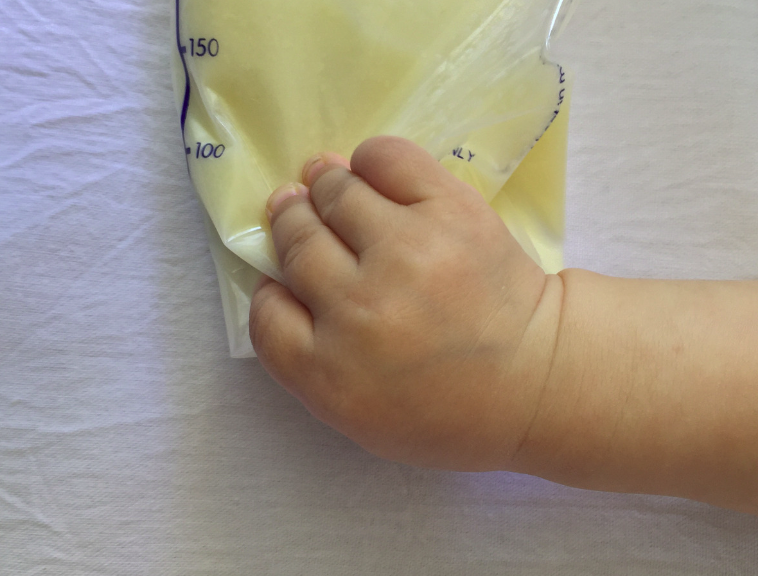
Private breast milk donation
Breast milk donation is not new, whether it is expressed breast milk and given to the infant in a recipient or directly at the breast of someone other than the baby’s mother. Breast milk donation has always existed in the history of humankind.
In most countries, the donation of human milk to milk banks for the purpose of feeding premature or sick infants is regulated. This usually happens under the umbrella of a donor bank, either within the hospital where such patients are admitted or an external institution that coordinates the collection, treatment, storage, and finally, the distribution of human milk by the different neonatology or NICU services that request it.
However, private human milk donation is a fact. Mothers and families are looking for alternatives that may fit into their approach to feeding their babies. Circumstances for this can be diverse. The possible situations for offering a baby donated milk can be many, ranging from difficulties with the mother’s own milk supply to pathophysiological difficulties to personal circumstances and so on. As healthcare professionals, we should know that the WHO (World Health Organization) recommends donor human milk before the use of artificial formula milk, so we have to know how to do this in a safe way.
If a patient or anyone else asks you for advice or help or simply informs you that they want to do this, it is more than likely that your first reaction may be “no” to this option. But this refusal doesn’t stop women, and therefore, minimizing the risks by offering the appropriate information would be the most appropriate thing to do.
What to consider in private human milk donation
- Know the donor
In many cases, the donor is a member of the same family or circle of friends, which offers a little peace of mind in the process. Evidently, the more unknown the donor person is, the more cautious you should be. Undoubtedly, many women help in a selfless way. Still, there are known situations that can put the baby’s health at risk, such as irregular handling of breast milk, adding cow’s milk formula or even water and little control over possible pathologies or toxic habits.
- Hygiene measures:
When talking about human milk donation for healthy babies, the recommendations for the extraction, handling, and conservation of milk are not usually as strict as in the case of donations of breast milk to a public milk bank. It’s also important to keep in mind that breast milk is a fluid that can get contaminated if it’s not handled carefully or if the cold chain is broken. The Academy of Breastfeeding Medicine (ABM) reflects this in its protocol number 8 (1).
- Health considerations regarding the donor:
There are very few infectious pathologies that can pass through breast milk. Likewise, it could be interesting to evaluate the possibility that the donor undergoes a blood test to rule out infections such as HIV and Human T-cell Lymphotropic Virus type 1 (HLTH-1 / HTLV-1). This virus is prevalent in West and Central African countries, Peru, the Caribbean, Colombia, Brazil, and Japan (2). Likewise, the donor should be aware of how infections are transmitted, such as dermal like herpes simplex. If they infect the nipple or areola, it is not recommended to offer human milk from the affected breast to the infant.
On the other hand, if the infant is fed primarily with donor milk and the donor is vegetarian, it is advisable to carry out a medical history and, if necessary, a blood test to rule out possible vitamin B12 deficiencies.
Donation of breast milk between mothers has always existed. Whether this was in situations of need for supplementing or when one of the mothers had to leave her baby to return to work or for any other reason, directly breastfeeding another baby or giving another woman’s pumped breast milk is not exceptional. This practice is very likely to continue to be done privately even if sometimes, healthcare professionals disapprove of it. Even so, it’s important that no matter your individual opinion, mothers should have the tools they ask for to be able to do this in a safe and informed way.
References
- De La, M., & Materna, L. (s/f). ABM Protocolo Clínico # 8: Almacenamiento de Leche Humana. Información para el Uso Casero en Bebés a Término (Protocolo Original Marzo 2004; Revisión #1 Marzo 2010). Bfmed.org. Recuperado el 31 de enero de 2024, de https://www.bfmed.org/assets/DOCUMENTS/PROTOCOLS/8-human-milk-storage-protocol-spanish.pdf
- Virus Linfotrópico de células T Humanas tipo 1 (VLTH-1 / HTLV-1). En e-lactancia.org. Recuperado 30 Enero, 2024 a partir de https://e-lactancia.org/breastfeeding/human-t-lymphotropic-virus-type-1-htlv-1/product/